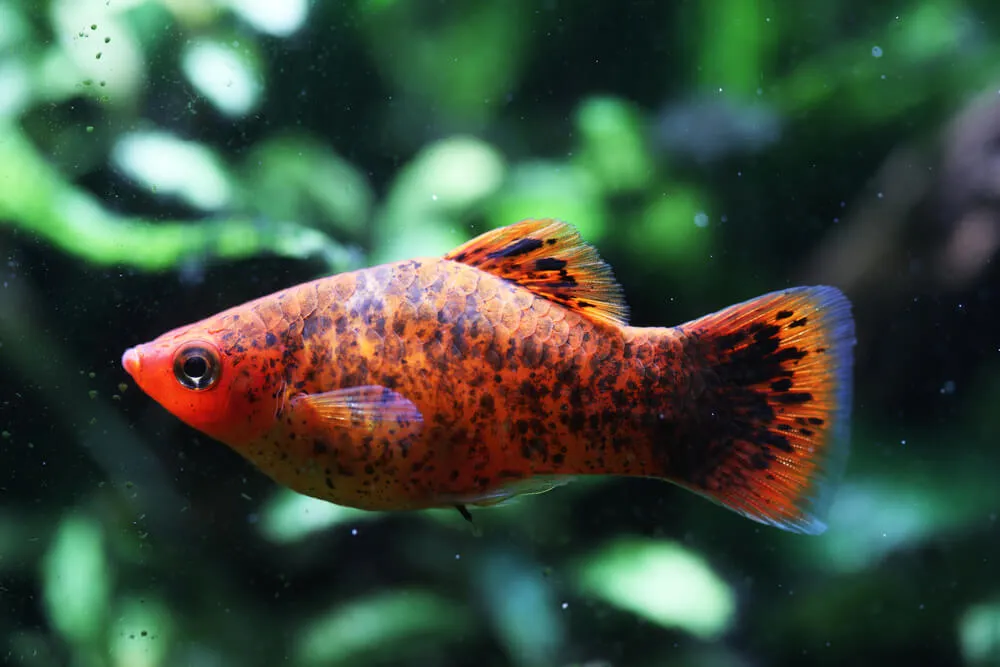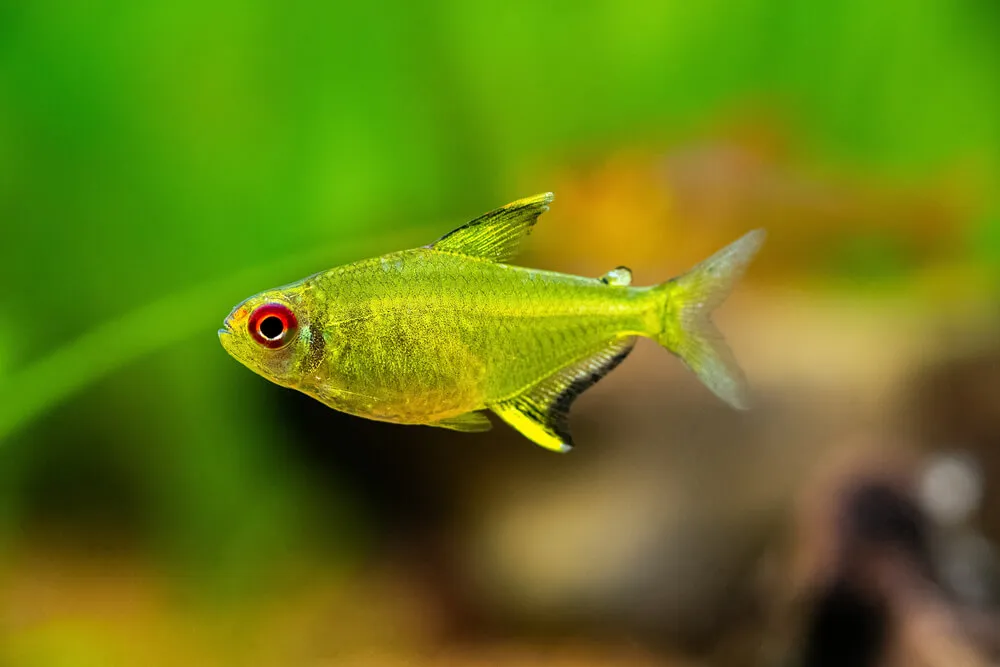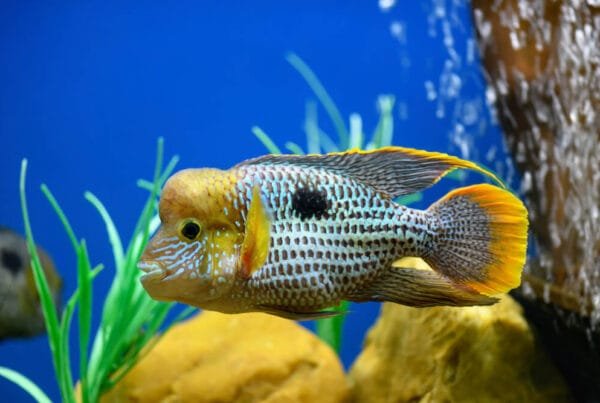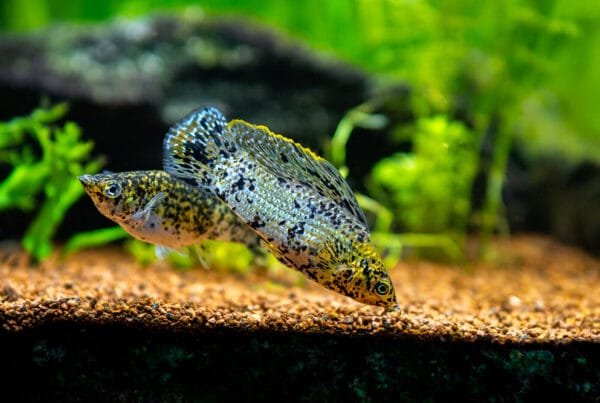Have you ever come across the exquisite Platy Fish? With its vibrant colors and graceful swimming, the Platy Fish is a true delight for aquarium enthusiasts. Originating from Central America, this small and peaceful species captures hearts with its serene nature and easy-to-care-for qualities. Whether you’re an experienced fish keeper or just starting out, the Platy Fish is a fantastic addition to any aquarium, bringing joy and beauty to your underwater world.
Platy Fish Basics
Description
Platy fish, scientifically known as Xiphophorus maculatus, are small freshwater fish that belong to the Poeciliidae family. They are known for their vibrant colors and peaceful nature, making them a popular choice among aquarium enthusiasts. Platies have wide, flat bodies and long tails, with males typically displaying more vibrant colors than females. They are available in a wide range of colors and patterns, making them a visually striking addition to any aquarium.
Origin
Platies are native to Central America, specifically Mexico, Guatemala, and Honduras. They can be found in freshwater rivers, streams, and stagnant ponds in these regions. In the wild, platies tend to inhabit areas with dense vegetation, as they rely on plants for cover and feeding.
Popularity
Platy fish have gained significant popularity among hobbyists due to their hardiness, ease of care, and ability to adapt to a wide range of water conditions. Their peaceful nature and ability to coexist with various other fish species further contribute to their popularity. Whether you are a beginner or an experienced aquarist, platies make an excellent choice for any aquarium setup.
Physical Features
Platies are small fish, usually growing to an average length of 2.5 to 3 inches. They have a laterally compressed body shape, with a dorsal fin located towards the posterior end of their body. Male platies often exhibit more colorful and elaborate finnage, with a signature sword-like extension on their tail, which gives them their name “swordtails.” Females, on the other hand, have rounded and more modest fins. Platies are available in a range of colors, including red, orange, yellow, blue, and black, making them visually appealing to fish enthusiasts.
Habitat and Tank Requirements
Aquarium Size
When considering the tank size for platy fish, it is important to provide them with enough space to swim and thrive. A minimum tank size of 10 gallons is recommended for a small group of platies. However, larger tanks, such as 20 gallons or more, will provide a more comfortable environment and allow for better filtration and water quality.
Water Parameters
Platies are adaptable fish and can tolerate a wide range of water conditions. The ideal temperature for platy fish ranges from 70 to 82 degrees Fahrenheit (21 to 28 degrees Celsius). They prefer slightly alkaline water with a pH level between 7.0 and 8.3. Additionally, it is important to maintain good water quality by regularly monitoring ammonia, nitrite, and nitrate levels and performing water changes when necessary.
Filtration
A good filtration system is essential for maintaining a healthy and balanced aquarium environment for platies. A combination of mechanical, biological, and chemical filtration is recommended to remove waste, neutralize toxins, and provide optimal water flow. It is important to choose a filter that suits the size of the aquarium and ensures sufficient water circulation to keep the water clean and oxygenated.
Decorations
Platies appreciate a well-decorated aquarium that mimics their natural habitat. Providing live or artificial plants not only enhances their aesthetic appeal but also gives the fish a sense of security and places to hide. Driftwood, rocks, and caves can also be added to create hiding spots and visual interest in the tank. It is important to ensure that decorations are smooth and do not have sharp edges that could potentially harm the platies.
Platy Fish Behavior
Social Behavior
Platies are known for their peaceful and social nature, making them excellent community fish. They are generally non-aggressive and can be kept with other peaceful fish species that share similar water requirements. Platies thrive in small groups, so it is recommended to keep at least two or three together to promote their natural behavior and reduce stress.
Compatibility with Other Fish
Platies are compatible with a wide range of community fish, including other peaceful species such as tetras, guppies, mollies, and dwarf gouramis. Avoid adding aggressive or fin-nipping fish, as platies have long, flowing fins that can be targeted by such species. Incompatible tankmates may stress or harm the platies, disrupting their peaceful nature.
Breeding Behavior
Platies are prolific breeders and can reproduce readily in a well-maintained aquarium. They are livebearers, which means the females give birth to free-swimming fry instead of laying eggs. Male platies may display courtship behavior by chasing and displaying their colorful fins to attract females. Once the female is impregnated, she can give birth to a new batch of fry every four to six weeks. It is important to have a plan in place for managing the fry population or adjusting tank conditions to limit breeding if desired.
Feeding Platy Fish
Dietary Requirements
Platies are omnivorous and have a flexible diet. They should be provided with a balanced diet that includes both high-quality dry flake or pellet food supplemented with live or frozen foods. A varied diet helps ensure their nutritional needs are met and promotes their overall health and coloration. High-quality food options include brine shrimp, bloodworms, daphnia, spirulina, and vegetable matter such as blanched spinach or lettuce.
Feeding Frequency
Platies should be fed small amounts of food multiple times a day rather than a large feeding once or twice a day. Aim to feed them as much as they can consume within two to three minutes. Overfeeding can lead to poor water quality and health issues, so it is important to practice moderation with their feeding schedule.
Types of Food
Platies readily accept dry flake or pellet food as their primary diet. It is essential to choose a high-quality food brand that provides a balanced nutritional profile suitable for livebearers. Supplementing their diet with occasional live or frozen foods adds variety and promotes natural foraging behavior. These foods can be offered as treats once or twice a week, depending on the availability and nutritional content of the specific food items.
Common Platy Fish Varieties
Red Wagtail Platy
The Red Wagtail Platy is one of the most common and widely recognized platy fish varieties. It is characterized by its vibrant red body color, contrasting with a dark tail fin. This variety is known for its striking appearance and is often sought after by fish enthusiasts.
Sunset Platy
The Sunset Platy is another popular variety, known for its warm orange and yellow hues. Its colorful fins and body make it an eye-catching addition to any aquarium. The Sunset Platy adds a vibrant and lively touch to the tank.
Mickey Mouse Platy
Named for its resemblance to the famous cartoon character, the Mickey Mouse Platy exhibits a black mark on its tail fin that resembles Mickey’s iconic silhouette. This variety adds a playful and recognizable element to an aquarium.
Blue Wagtail Platy
The Blue Wagtail Platy stands out with its electric blue body color and contrasting tail fin. This variety adds a cool and captivating element to an aquarium, creating visual interest and enhancing the overall aesthetic.
Health and Disease
Common Health Issues
Platy fish are generally hardy and resilient, but they may still be susceptible to certain health issues or diseases. Some common health issues that platy fish may experience include fin rot, ich (white spot disease), and swim bladder disorder. It is important to regularly monitor their behavior and appearance to identify any signs of illness and promptly address them.
Prevention Measures
Maintaining good water quality, providing a balanced diet, and avoiding overcrowding can help prevent many health issues in platy fish. Regular water parameter monitoring, proper filtration, and adequate tank maintenance are essential in preventing the accumulation of harmful toxins and pathogens. Quarantining new fish before introducing them to the main tank can also help prevent the introduction of diseases.
Treatment Options
When faced with health issues or diseases, it is crucial to take prompt action to ensure the well-being of platy fish. Identifying the specific disease or condition is important before selecting the appropriate treatment. Options for treatment may include medicated aquarium salt baths, antibacterial or antiparasitic medications, and ensuring optimal water conditions to support the fish’s immune system. Consulting with a veterinarian or experienced aquarist can provide guidance on appropriate treatment options.
Platy Fish Tankmates
Ideal Tankmates
Platies are generally peaceful and can coexist with a variety of other peaceful community fish. Some ideal tankmates for platies include guppies, mollies, tetras, swordtails, and dwarf gouramis. These fish share similar water requirements and temperaments, making them compatible tankmates.
Incompatible Tankmates
Aggressive or fin-nipping fish should be avoided when selecting tankmates for platies. Such fish can cause stress and potentially harm the platy’s long, flowing fins. Examples of incompatible tankmates include bettas (Siamese fighting fish), barbs, and cichlids. These fish are known for their territorial or aggressive behavior and may disrupt the peace within the aquarium.
Platy Fish Breeding
Breeding Process
Breeding platies is relatively straightforward, as they are livebearers that give birth to free-swimming fry. To initiate breeding, it is important to maintain a healthy male-to-female ratio. Males will display courtship behavior, chasing the females and displaying their colorful fins. Once the female is impregnated, the gestation period lasts around 28 to 30 days. After giving birth, the female may continue to produce fry in subsequent batches without the need for additional mating.
Caring for Fry
Providing suitable hiding spots is crucial to ensure the survival of the fry. Live or artificial plants, floating vegetation, or dedicated breeding traps can be used to protect the fry from being eaten by adult fish. It is important to provide the fry with small, finely crushed or powdered food suitable for their small mouths. Frequent water changes and close monitoring of water parameters are also essential for the healthy development of the fry.
Tips for Keeping Platy Fish
Tank Maintenance
Regular tank maintenance, including water changes, filter cleaning, and removal of debris, is crucial for the overall health and well-being of platy fish. Performing partial water changes of around 20% every one to two weeks helps maintain water quality and reduce the build-up of toxins. It is also important to vacuum the substrate to remove any uneaten food or waste.
Preventing Stress
Platies are generally resilient fish, but they can still experience stress, which can lead to health issues. Providing a well-established and properly maintained aquarium with suitable tankmates, hiding spots, and adequate space is essential in minimizing stress. Avoid sudden changes in water temperature or drastic environmental changes, as these can cause stress in the fish.
Buying and Acclimatizing
When purchasing platy fish, choose healthy specimens from reputable sources. Look for active, alert, and brightly colored individuals. It is recommended to acclimate the fish to the new tank environment gradually. This can be done by floating the bag in the aquarium to equalize the temperature and slowly introducing small amounts of tank water into the bag over a period of time. This helps the fish adjust to the new water parameters and reduces the chance of shock.
Frequently Asked Questions (FAQs)
What is the lifespan of a platy fish?
Platy fish have an average lifespan of two to three years. However, with proper care and a suitable environment, they can live up to five years or more.
How many platy fish should be kept together?
Platy fish are social and thrive in small groups. Ideally, a minimum of two or three platy fish should be kept together to promote their natural behavior and reduce stress.
Can platy fish live in a community tank?
Yes, platy fish are peaceful and can coexist with a variety of other peaceful community fish. They are compatible with species such as guppies, mollies, tetras, swordtails, and dwarf gouramis. However, it is essential to avoid aggressive or fin-nipping fish that may stress or harm the platies.







